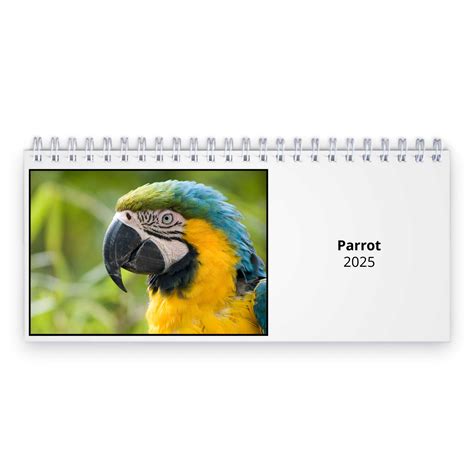Keeping a parrot as a pet can be a fun and rewarding experience, but it’s important to remember that these birds are incredibly social creatures that require a great deal of attention, care, and enrichment, just like with any other pet. One of the best ways to ensure that your parrot is healthy and happy is to collect data.

1. Track and measure health data to ensure your parrot’s well-being.
Just like us, parrots can suffer from a variety of health conditions, from minor ailments to serious illnesses. By tracking your parrot’s health data, you can identify potential health issues early on and take steps to prevent them from becoming more serious.
Some of the health data you should track includes:
- Weight: Your parrot’s weight should be monitored regularly to ensure that it is maintaining a healthy weight. Sudden weight loss or gain can be a sign of a health problem.
- Appetite: Your parrot’s appetite should be consistent. A sudden decrease or increase in appetite can be a sign of a health problem.
- Activity level: Your parrot should be active and engaged in its environment. A sudden decrease in activity level can be a sign of a health problem.
- Vocalizations: Your parrot’s vocalizations should be consistent. A sudden change in vocalizations can be a sign of a health problem.
- Feathers: Your parrot’s feathers should be healthy and free of any damage. Broken or missing feathers can be a sign of a health problem.
- Skin: Your parrot’s skin should be healthy and free of any redness, irritation, or sores. Redness, irritation, or sores can be a sign of a health problem.
By tracking your parrot’s health data, you can identify potential health issues early on and take steps to prevent them from becoming more serious.
2. Data can help parrot breeders improve their breeding programs.
Parrot breeders can use data to improve their breeding programs in a number of ways. For example, data can be used to:
- Track the health of breeding pairs: Breeders can use data to track the health of their breeding pairs, which can help them identify potential health issues that could affect the offspring.
- Track the fertility of breeding pairs: Breeders can use data to track the fertility of their breeding pairs, which can help them identify pairs that are not producing offspring.
- Track the growth and development of chicks: Breeders can use data to track the growth and development of their chicks, which can help them identify potential health issues that could affect the chicks.
By using data to improve their breeding programs, parrot breeders can produce healthier and more viable offspring.
3. Data can help bird veterinarians diagnose and treat diseases.
Bird veterinarians can use data to diagnose and treat diseases in a number of ways. For example, data can be used to:
- Identify patterns of disease: Bird veterinarians can use data to identify patterns of disease, which can help them diagnose diseases more quickly and accurately.
- Develop new treatments: Bird veterinarians can use data to develop new treatments for diseases, which can help improve the health and well-being of parrots.
- Track the effectiveness of treatments: Bird veterinarians can use data to track the effectiveness of treatments, which can help them determine which treatments are most effective.
By using data to diagnose and treat diseases, bird veterinarians can help parrots live longer, healthier lives.
4. Data can help parrot owners learn more about their birds.
Parrot owners can use data to learn more about their birds in a number of ways. For example, data can be used to:
- Track your parrot’s behavior: Parrot owners can use data to track their parrot’s behavior, which can help them identify potential health issues, boredom, excitement, and other concerns.
- Track your parrot’s diet: Parrot owners can use data to track their parrot’s diet, which can help them identify potential nutritional deficiencies or imbalances.
- Track your parrot’s environment: Parrot owners can use data to track their parrot’s environment, which can help them identify potential environmental hazards.
By using data to learn more about their birds, parrot owners can provide their birds with the best possible care.
Conclusion
Data can be a powerful tool for improving the health and well-being of parrots. By tracking and measuring health data, breeders, veterinarians, and owners can identify potential health issues early on and take steps to prevent them from becoming more serious. Data can also be used to improve breeding programs, diagnose and treat diseases, and learn more about parrots. By using data, we can help parrots live longer, healthier, and happier lives.





















